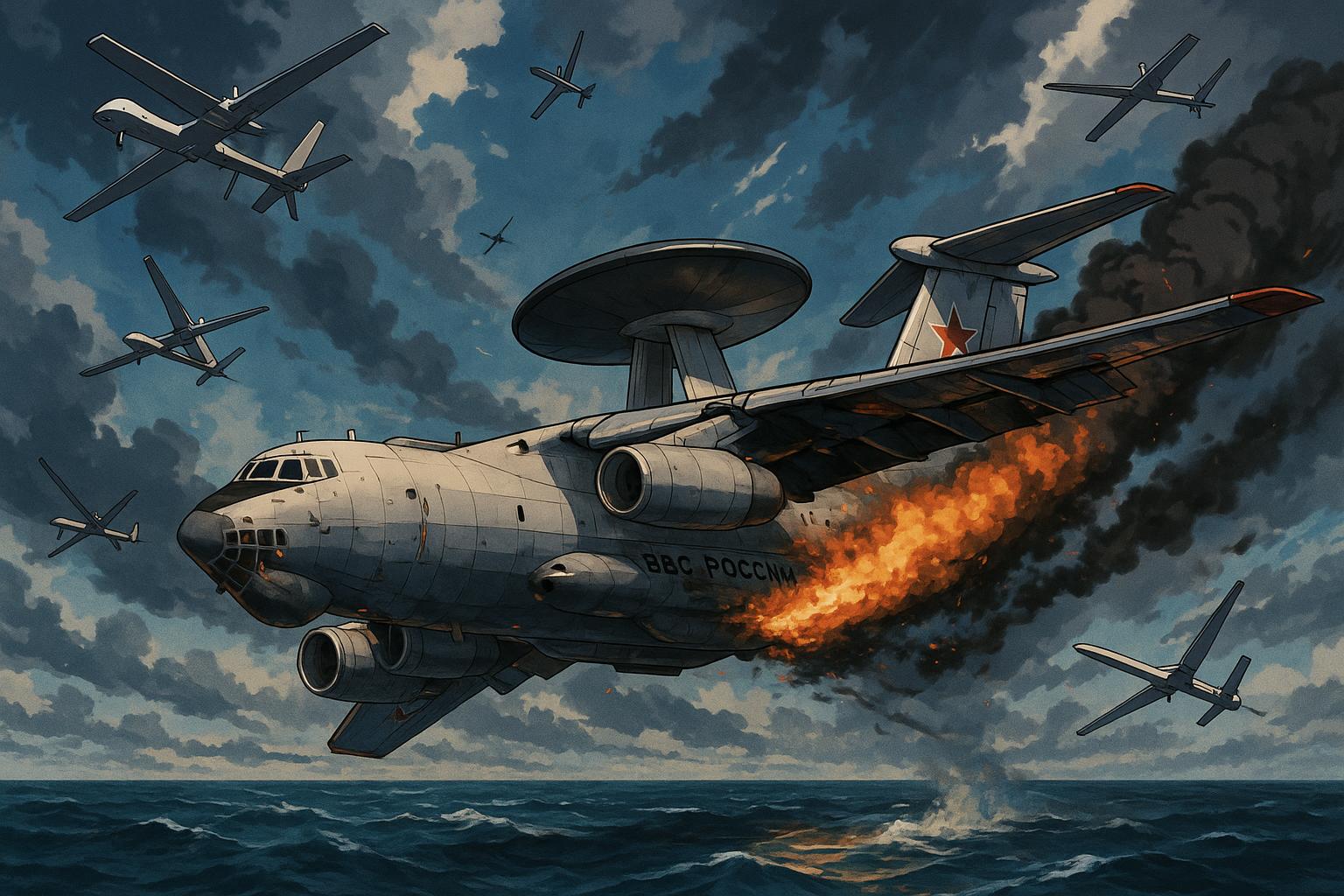The ongoing conflict in Ukraine has recently seen significant developments with the reported loss of Russian military aircraft. According to the wife of a Russian pilot, her husband’s Beriev A-50 spy plane was downed over the Sea of Azov. The incident occurred during a mission with an Il-22 command post aircraft, which was damaged but managed an emergency landing at Anapa airport. However, the A-50, a critical component of Russia's aerial surveillance and battlefield strategy, did not survive. The pilot's wife shared the grim news via the Telegram Channel VChK-OGPU, stating that the aircraft has been officially listed as missing, with the crew presumed dead.
The A-50 is valued at approximately USD 350 million (£259m) and plays a crucial role in Russian military operations, particularly in detecting Ukrainian missile launches and coordinating air support. It possesses a surveillance range of up to 640 kilometres and is essential for situational awareness on the battlefield. Prior to the full-scale invasion in 2022, Russia was believed to have eight A-50s at its disposal, making this loss particularly impactful as it signals a significant gap in their aerial capabilities.
This loss follows the downing of another A-50 on February 23, 2024, marking a notable achievement for Ukrainian forces as the war enters its third year. Ukrainian Air Force Chief General Mykola Oleshchuk credited military intelligence for the success, highlighting this incident in the context of ongoing fierce conflict, notably commemorated on Russia’s Defender of the Fatherland day. Local officials reported that the aircraft crashed in the Krasnodar region, with fragments found, adding to the narrative of active hostilities that continue to shape the region.
Moreover, following these incidents, the UK Defence Ministry indicated that Russia may have grounded its remaining A-50 fleet to assess their operational viability. Reports suggest that, as of early March 2024, Russia has lost potentially half of its A-50 aircraft in recent months. Current estimates imply only six of these vital planes remain operational, significantly limiting Russia's aerial reconnaissance capabilities and reorganising military strategy amidst sustained Ukrainian offensives.
Further compounding the situation, Ukrainian forces have launched effective operations targeting facilities in Russia, including a strike on an aviation repair plant in Taganrog, where A-50s are maintained. Such strikes contribute to Russia's diminishing aerial surveillance, limiting their ability to monitor and respond to Ukrainian advancements.
The ramifications of these aircraft losses are profound. They not only deplete the Russian military’s operational assets but also serve to bolster Ukrainian morale and enhance calls from Western allies for expedited military assistance to Ukraine. This dynamic could prove pivotal as the conflict escalates, with battlefield decisions increasingly driven by both hardware capabilities and the intelligence derived from them.
As both sides brace for continued engagement, the skies above Ukraine have become a battleground in their own right, where the strategic assets once considered definitive advantages may now be faltering.
📌 Reference Map:
Source: Noah Wire Services
